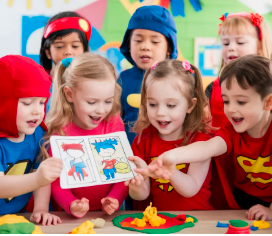Seasonal themes are a wonderful way to introduce preschoolers to the world around them. As the year changes, so do the colors, weather, holidays, and natural wonders. Incorporating these into classroom learning helps children make connections between what they see outside and what they explore in class.
Why Use Seasonal Themes?
Children are naturally curious about the world. When a preschool class learns about falling leaves in autumn or blooming flowers in spring, they connect real-world experiences with learning. Seasonal themes also bring structure and variety, helping teachers plan engaging lessons while keeping children excited.
Tips for Planning Seasonal Themes
-
Align With the Calendar
Plan ahead by identifying the seasons and any major holidays or events. For example, autumn can include themes like pumpkins, harvest, or forest animals, while winter might explore snow, stars, or celebrations from different cultures. -
Use All Senses
Preschoolers learn best when they can touch, see, hear, smell, and even taste what they’re learning. A fall theme might include leaf rubbing crafts, listening to the crunch of leaves, and tasting apples. -
Include Books and Songs
Every season has its own stories and music. Reading picture books about the first snowfall or singing songs about spring rain helps deepen children’s understanding in a joyful way. -
Offer Hands-On Activities
Create seasonal art projects, sensory bins, and pretend play areas. In spring, children can plant seeds. In summer-themed units, they might explore water through safe, supervised play. -
Celebrate Diversity
Not all children experience the seasons the same way. Include different traditions and family customs during holidays and seasonal events. This helps children feel included and valued. -
Incorporate Nature Walks
If possible, take short walks to observe seasonal changes. Collect leaves in the fall, observe shadows in the summer, or listen for birds in the spring. These outdoor experiences are full of learning.
Examples of Seasonal Theme Ideas
-
Fall: Leaves, harvest time, pumpkins, woodland creatures
-
Winter: Snowflakes, hibernation, kindness, starry skies
-
Spring: Flowers, weather changes, baby animals, gardening
-
Summer: Sunshine, beach, water safety, bugs and butterflies
Closing Thoughts
Seasonal themes help create a rhythm in the preschool classroom that children look forward to. They spark curiosity, support development, and make learning more relatable. With thoughtful planning and a flexible approach, preschool educators can bring the magic of every season to life in fun and meaningful ways.


